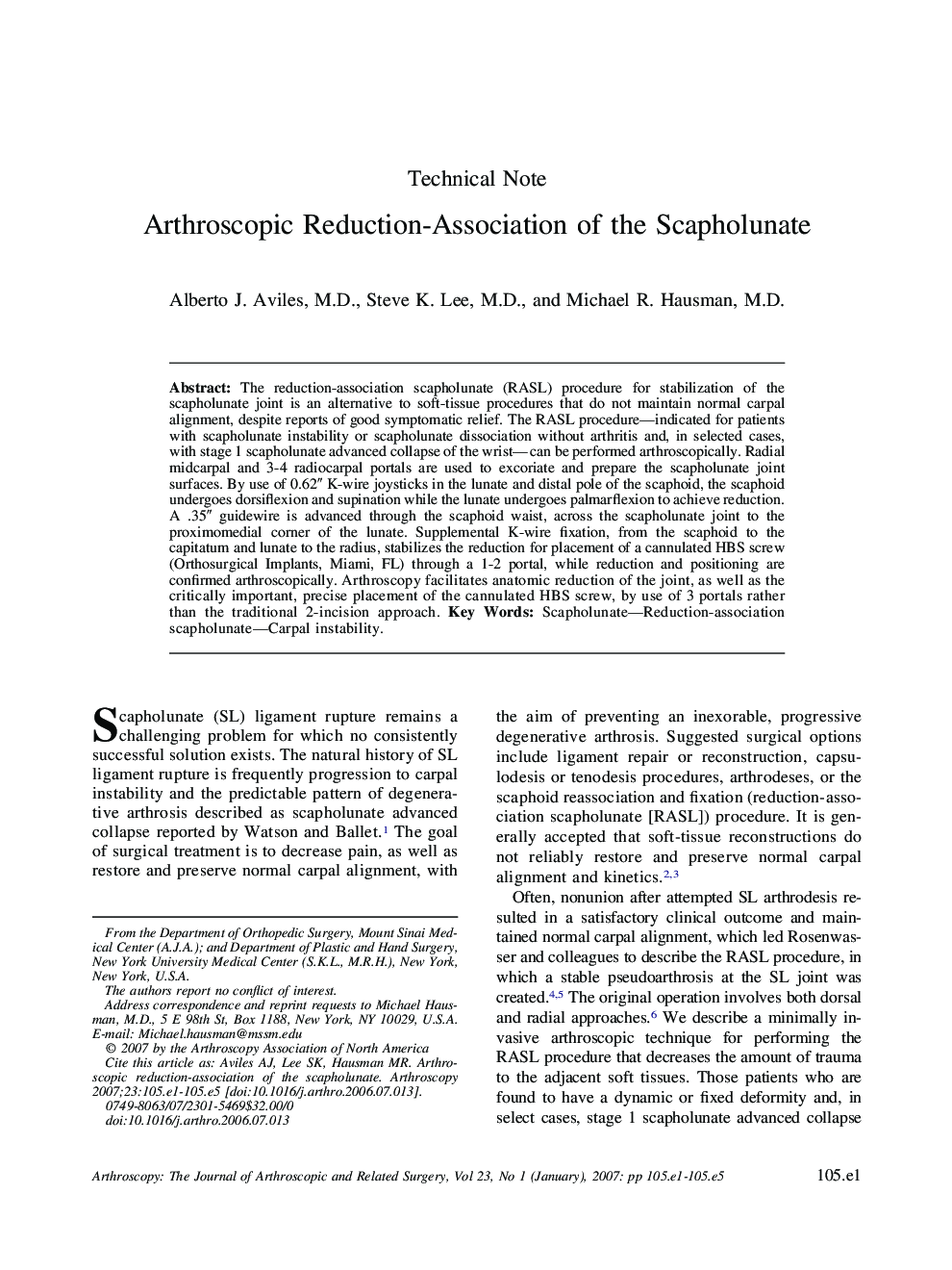| Article ID | Journal | Published Year | Pages | File Type |
|---|---|---|---|---|
| 4047226 | Arthroscopy: The Journal of Arthroscopic & Related Surgery | 2007 | 5 Pages |
Abstract
The reduction-association scapholunate (RASL) procedure for stabilization of the scapholunate joint is an alternative to soft-tissue procedures that do not maintain normal carpal alignment, despite reports of good symptomatic relief. The RASL procedure-indicated for patients with scapholunate instability or scapholunate dissociation without arthritis and, in selected cases, with stage 1 scapholunate advanced collapse of the wrist-can be performed arthroscopically. Radial midcarpal and 3-4 radiocarpal portals are used to excoriate and prepare the scapholunate joint surfaces. By use of 0.62â³ K-wire joysticks in the lunate and distal pole of the scaphoid, the scaphoid undergoes dorsiflexion and supination while the lunate undergoes palmarflexion to achieve reduction. A .35â³ guidewire is advanced through the scaphoid waist, across the scapholunate joint to the proximomedial corner of the lunate. Supplemental K-wire fixation, from the scaphoid to the capitatum and lunate to the radius, stabilizes the reduction for placement of a cannulated HBS screw (Orthosurgical Implants, Miami, FL) through a 1-2 portal, while reduction and positioning are confirmed arthroscopically. Arthroscopy facilitates anatomic reduction of the joint, as well as the critically important, precise placement of the cannulated HBS screw, by use of 3 portals rather than the traditional 2-incision approach.
Keywords
Related Topics
Health Sciences
Medicine and Dentistry
Orthopedics, Sports Medicine and Rehabilitation
Authors
Alberto J. M.D., Steve K. M.D., Michael R. M.D.,
